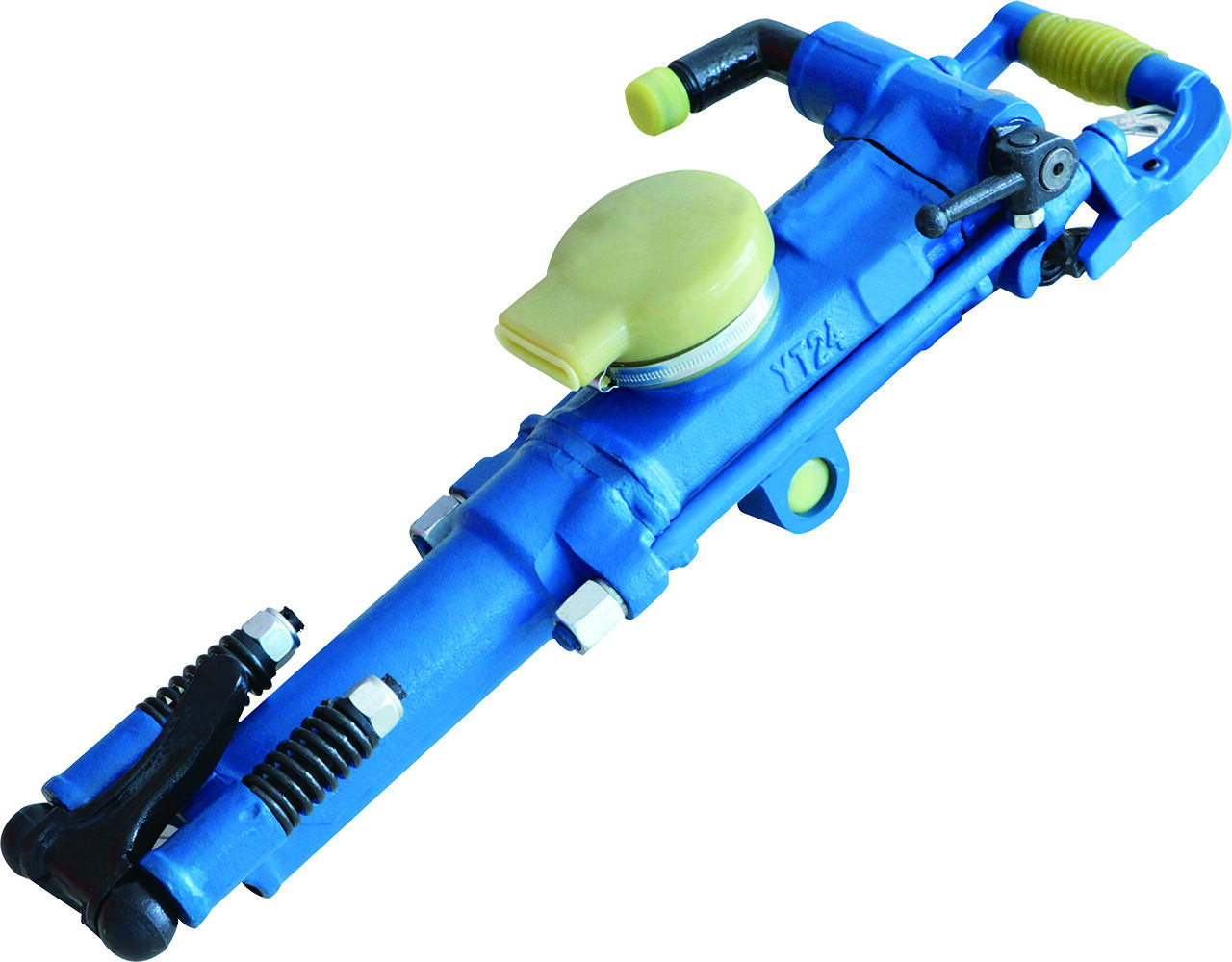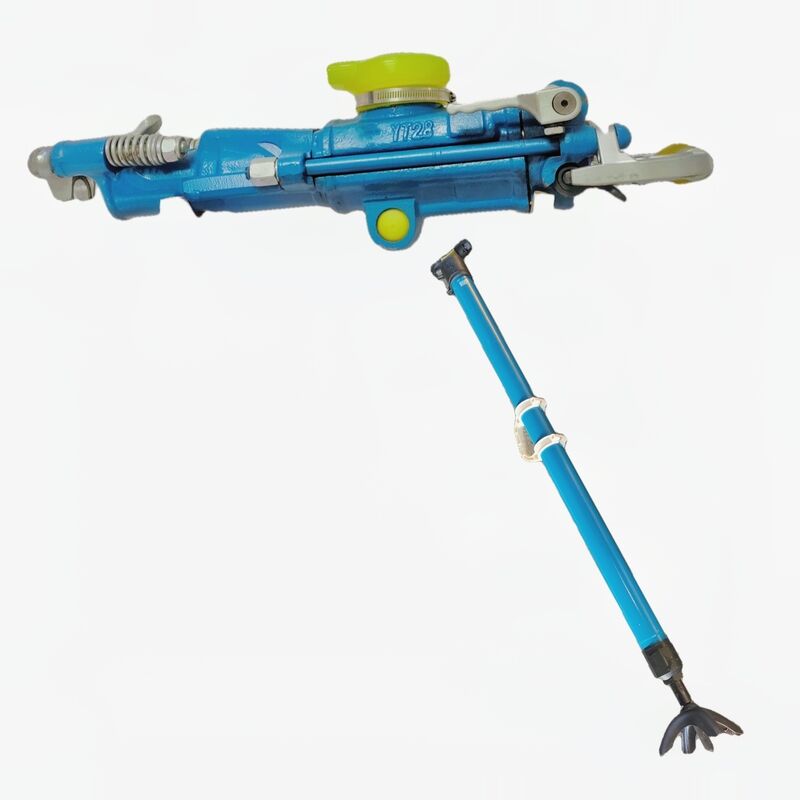Comparing Pneumatic Rock Drills: Key Features and Applications
Pneumatic rock drills are essential tools in construction, mining, and excavation industries, designed to break through hard materials like rock, concrete, and stone using compressed air power. Their reliability, power, and versatility make them a preferred choice for many heavy-duty applications. With various models available, each designed for specific tasks, understanding the key features and applications of different pneumatic rock drills is crucial for selecting the right tool for the job. This guide compares pneumatic rock drills based on their features, performance, and ideal uses, helping professionals make informed decisions.
What Are Pneumatic Rock Drills?
Pneumatic rock drills are power tools that use compressed air to generate mechanical energy for drilling, breaking, or chiseling hard materials. Unlike electric or hydraulic drills, they rely on an air compressor to provide the force needed for operation. This makes pneumatic rock drills particularly suitable for remote locations or harsh environments where electricity may be unavailable or hazardous.
The basic design of pneumatic rock drills includes a drill bit, a piston that moves back and forth, and an air inlet that connects to a compressor. When compressed air enters the tool, it drives the piston, which strikes the drill bit repeatedly, creating a hammering action that breaks through rock or concrete. This simple yet effective mechanism has made pneumatic rock drills a staple in industries requiring heavy-duty material penetration.
Key Features to Compare in Pneumatic Rock Drills
When evaluating pneumatic rock drills, several key features determine their performance, suitability for specific tasks, and overall efficiency.
1. Power and Performance
The power of pneumatic rock drills is typically measured by their impact energy (in joules) and impact frequency (blows per minute). These metrics determine how effectively the drill can penetrate hard materials:
- Impact Energy: Higher impact energy (measured in joules) allows the drill to break through denser, harder rock. For example, a drill with 50 joules of impact energy works well for medium-hard rock, while one with 100+ joules is better for granite or reinforced concrete.
- Impact Frequency: Measured in blows per minute (BPM), this indicates how quickly the drill strikes the material. Higher BPM (1,500–3,000) increases drilling speed but may reduce impact energy per blow.
Balancing these two factors is important—some pneumatic rock drills prioritize high impact energy for tough materials, while others focus on higher frequency for faster drilling in softer rock.
2. Size and Weight
Pneumatic rock drills come in various sizes, from lightweight handheld models to heavy-duty rig-mounted units:
- Handheld Drills: Weigh 5–15 kg, suitable for small-scale jobs like drilling holes for anchors or light demolition. Their portability makes them ideal for work in tight spaces.
- Medium-Weight Drills: Weigh 15–30 kg, designed for more intensive tasks like quarrying or road construction. They often require two operators or a support frame.
- Heavy-Duty Drills: Weigh 30+ kg, mounted on rigs or trolleys for large-scale mining, tunneling, or foundation work. These industrial pneumatic rock drills deliver maximum power for continuous operation.
The size and weight directly affect maneuverability and operator fatigue—lighter drills are easier to handle but less powerful, while heavier models require more setup but tackle tough materials efficiently.
3. Air Consumption and Compressor Requirements
Pneumatic rock drills depend on compressed air, so their air consumption (measured in cubic feet per minute, CFM, or liters per second, L/s) is a critical factor:
- Small handheld pneumatic rock drills typically use 30–60 CFM.
- Medium-duty models require 60–120 CFM.
- Heavy-duty rig-mounted drills may need 120+ CFM.
Matching the drill to a properly sized compressor is essential for optimal performance. Insufficient air supply reduces power and can damage both the drill and compressor. Most manufacturers specify the minimum compressor size required for their pneumatic rock drills.
4. Drill Bit Compatibility
Pneumatic rock drills work with various drill bit types, and compatibility affects their versatility:
- Bit Shank Size: The connection point between the drill and bit varies (e.g., 7/8", 1", or hexagonal shanks). Choosing the right shank size ensures a secure fit and efficient energy transfer.
- Bit Types: Different bits (chisel, cross, or button bits) are designed for specific tasks—chisel bits for breaking, cross bits for general drilling, and button bits for hard rock. Most pneumatic rock drills accommodate multiple bit types, but some are specialized for particular applications.
5. Ergonomics and Safety Features
Operator comfort and safety are important for productivity and injury prevention:
- Vibration Reduction: Pneumatic rock drills generate significant vibration, which can cause operator fatigue or long-term injuries. Models with anti-vibration handles or shock-absorbing systems reduce this risk.
- Noise Levels: These tools are loud, but modern pneumatic rock drills often include noise-dampening features to meet safety standards (typically below 100 decibels).
- Safety Switches: Features like dead-man switches (which stop operation when released) and overload protection prevent accidents.
- Handle Design: Ergonomic grips and balanced weight distribution make the drill easier to control during extended use.
6. Durability and Maintenance
Pneumatic rock drills operate in harsh conditions, so durability is key:
- Construction Materials: High-quality models use hardened steel for critical components (piston, cylinder) and corrosion-resistant coatings to withstand dust, moisture, and debris.
- Maintenance Requirements: Look for pneumatic rock drills with easy access to parts (like air filters and lubrication points) to simplify upkeep. Regular lubrication and filter cleaning extend the tool’s lifespan.
- Warranty: Longer warranties (1–3 years) indicate manufacturer confidence in durability.
Types of Pneumatic Rock Drills and Their Applications
Different types of pneumatic rock drills are designed for specific tasks. Understanding their applications helps in selecting the right tool.
1. Handheld Pneumatic Rock Drills
These lightweight drills (5–15 kg) are operated by hand, making them ideal for small-scale jobs requiring mobility:
2. Jackleg Pneumatic Rock Drills
Jackleg drills are medium-weight (15–30 kg) tools mounted on a telescoping leg that supports the drill, reducing operator fatigue during extended use:
3. Stoper Pneumatic Rock Drills
Similar to jacklegs but with a fixed leg, stoper drills are designed for vertical drilling in mines and tunnels:
4. Rig-Mounted Pneumatic Rock Drills
Heavy-duty models (30+ kg) mounted on rigs, trolleys, or excavators for large-scale operations:
5. DTH (Down-the-Hole) Pneumatic Rock Drills
DTH drills are specialized tools where the hammer mechanism is located at the bottom of the drill string, directly behind the bit:
Selecting the right pneumatic rock drill depends on several factors:
- Material Hardness: For soft rock (sandstone), a lower impact energy drill suffices. Hard rock (granite) requires higher impact energy models.
- Job Scale: Small repairs need handheld drills; large mining operations require rig-mounted units.
- Accessibility: Tight spaces or underground work benefit from lightweight, maneuverable models like jacklegs or handheld drills.
- Compressor Availability: Ensure your compressor can meet the drill’s air consumption requirements.
- Operator Experience: Heavier drills may require trained operators to handle safely and efficiently.
Real-World Comparison Examples
Construction Site Scenario
A road construction crew needs to break up concrete pavement and drill anchor holes. A handheld pneumatic rock drill (e.g., Ingersoll Rand 114G) with 40 joules impact energy and 2,500 BPM works well for this. It’s lightweight enough for mobility, uses a standard 50 CFM compressor, and handles both breaking and drilling tasks.
Mining Operation Scenario
An underground mine requires vertical roof bolt holes. A stoper pneumatic rock drill (e.g., Atlas Copco SBU 160) with 80 joules impact energy and a rigid frame ensures accurate vertical drilling. Its anti-vibration features protect operators during all-day use, and it connects to the mine’s high-capacity compressor system.
Quarry Scenario
A limestone quarry needs to drill 10-meter-deep blast holes. A rig-mounted DTH pneumatic rock drill (e.g., Sandvik DTH 350) with 200 joules impact energy and high air flow (150 CFM) handles deep drilling efficiently. Its durable construction withstands constant use in dusty quarry conditions.
FAQ
How do pneumatic rock drills differ from hydraulic or electric models?
Pneumatic rock drills use compressed air, making them lighter and suitable for remote areas without electricity. Hydraulic drills offer more power but require a hydraulic system, while electric drills are quieter but limited by power cords or battery life. Pneumatic models excel in harsh, dusty environments where other drills might fail.
What maintenance do pneumatic rock drills require?
Regular maintenance includes lubricating moving parts with pneumatic tool oil, cleaning air filters to prevent debris from entering the system, and inspecting hoses for leaks. Daily checks for wear on drill bits and piston components also help prevent breakdowns.
Can one pneumatic rock drill handle multiple tasks?
Many medium-duty pneumatic rock drills are versatile enough for drilling and light breaking when using different bits. However, specialized tasks (like deep hole drilling or precision anchoring) may require dedicated models designed for those purposes.
How important is compressor size for pneumatic rock drills?
Very important. An undersized compressor will reduce the drill’s power and can cause overheating. Always match the drill to a compressor that meets or exceeds its air consumption requirements (check the manufacturer’s specifications).
Are pneumatic rock drills safe to use?
When used properly with safety gear (ear protection, goggles, gloves, and steel-toed boots), they are safe. Features like dead-man switches and anti-vibration handles further enhance safety. Operators should receive training on proper handling and maintenance.
How long do pneumatic rock drills last?
With proper maintenance, handheld models last 3–5 years, while heavy-duty rig-mounted pneumatic rock drills can operate for 10+ years. Lifespan depends on usage intensity, maintenance frequency, and operating conditions (dust, moisture, etc.).


